

Unclaimed: Are are working at Airtable ?
Airtable Reviews & Product Details
Airtable is a powerful visual project management platform that synergizes data, workflows, and execution teams on a unified dashboard. Streamlining work streams, the platform provides a synced and up-to-date information database that can be accessed by all stakeholders across different departments. Customization is at the heart of Airtable, allowing teams to create personalized apps and a tailored interface allowing easy access to relevant information and giving clear sightlines to the next steps. While customization is a key benefit, it also offers ready-to-use and pre-loaded industry-agnostic templates while extensive integrations and expandability make it scalable and agile.


| Capabilities |
|
|---|---|
| Segment |
|
| Deployment | Cloud / SaaS / Web-Based, Mobile Android, Mobile iPad, Mobile iPhone |
| Support | 24/7 (Live rep), Chat, Email/Help Desk, FAQs/Forum, Knowledge Base, Phone Support |
| Training | Documentation |
| Languages | English |

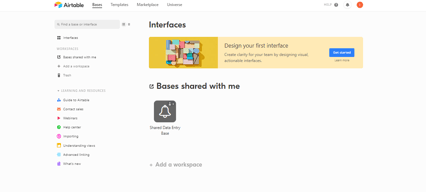
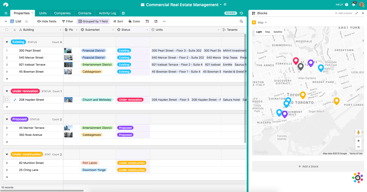
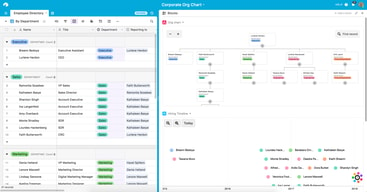
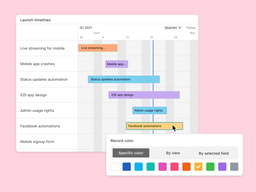
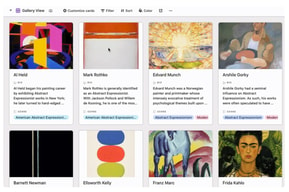
Compare Airtable with other popular tools in the same category.

High degree of customizations. I've always been able to find good resources online for customizing my databases and creating templates. I love the continuously work to make the product better and far reaching.
Starting with it can feel daunting. You need some support creating the databases that would be needed specifically for you.
We keep all our service databases and contacts for our company. We also use it for AP and AR record tracking.
Assigning tasks, organizing workload and tagging
better notifications are sometimes needed by my team
Publication schedules for the organization I work at
What I liked the most is Airtable is a friendly user and one of the standout features is its felxibility.
None, Airtable provides a comprehensive solution for organizing, tracking, and managing data.
Airtable is powerful filtering, sorting, and grouping capabilities enable efficient data organization and analysis.
Airtable is extremely easy to use for a wide range of needs. Our organisation uses it every single day. I love the option to have different views such as list, kanban, filtering by columns etc. It took less than a week to integrate into our organisation which was very appealing to me. I appreciate the option to have different projects and within that, different tables.
I don't think there's anything I could fault about Airtable!
We needed a place to easily and clearly list where different clients were at within a workflow and Airtable has been perfect for that. We have definitely saved on time since utilising Airtable. Communication has also improved.
Très facile d’utilisation, fonctionnalités puissantes.
Pas de possibilité d’hébergement sur une machine virtuelle.
Il m’aide à piloter mon activité et à construire une application interactive
The benefits of using Airtable in my profession are very clear. This is an all-purpose toolbox for data management which provides unmatched flexibility for various tasks. Managing projects is so simple because I have tailored the version to suit my needs. Surprisingly its user friendly interface is something that one would not expect from a digital tool.
Although, it can be said that Airtable is very flexible, when it comes to specific sectors, it may be necessary to turn to some other platforms with more refined functionalities. It might not, however, be adequate for complex data modelling in accounting when there are specialized tools which are more efficient than it.
My work has become much easier with airtable as I effortlessly track and report tasks. It’s narrowing the divide between spreadsheets and databases. Appreciate how it has streamlined most of my activities.
I have observed that Airtable helps to custom personalize boards according to the team’s workflow. Projects have been made more orderly and systematic through the boards. Appreciate how it is always syncing in real time, keeping everyone on the team updated. Universe is a nice addition, giving numerous methodologies to use in different projects. Its integration with social media also ensures that we plan our outreach effectively.
Although Airtable has many features, its interface may not always be simple and easy to use. It was quite a patient affair during the set up, and especially in attempting to mold a template to the specific ideas and procedures.
We have simplified our planning and tracking and reduced the time spent on manual updates because of Airtable. Its boards help to provide clarity on tasks and progress to keep projects on track. Consequently, we are able to work better together as a unit and achieve more productive sprints that produce the desired outcomes.
It is more enhanced and easy to use for integration
Not able to view the image in the full form
It is more feasible and whenver the row is added all the details are coming along with it
Airtable is a powerful and flexible tool for storing and managing opportunities. It is easy to use, affordable, and constantly evolving. Airtable is a lifesaver for managing and recieving opportunities for our marketplace. I love that it connects with softrand BOOM I have a functional subscription application.
Airtable can be overwhelming at first. There are a lot of features and options, and it can be a bit complex to learn at first, especially if you are not familiar with relational databases.
I am able to store opportunities I've manually found for my Community. I also use Airtable to recieve opportunities from organizations who want to list their submission on our platform. Summery of use: Organize my work more efficiently Keep track of important deadlines Collaborate with others more easily Make better decisions based on data
Airtable has really changed my app development projects’ management. I especially love the automation feature since it saves life, especially for those repetitive tasks that could take much of my time. Smooth linking between different tables and ability to connect various data. The interface makes it easy for me to create custom views and dashboards, which makes my database work more efficient and streamlined.
Of course, Airtable is definitely a big learning curve when starting with it, just because of everything you can do with Airtable. Another con also that I have experienced with it is the cost it is associated with when you want to integrate advanced features or to bring large number of collaberators in a base.
Airtable has virtually removed the manual handling of my project workflows. With my database needs being organized and automated, I can now undertake the real development. It has proven to be very good for my efficiency and shortened project lengths.





